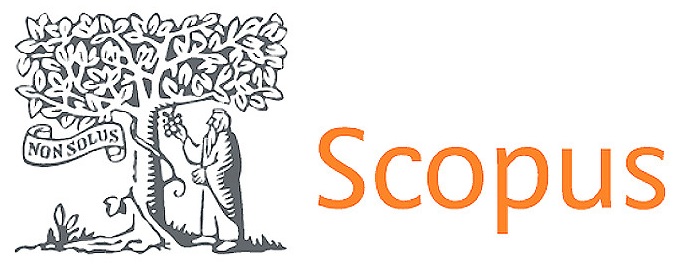Historical evolution of the development of calligraphy skills in preschool children, sixth year of life
DOI:
https://doi.org/10.56294/mw2023206Keywords:
pre-school childhood, calligraphic skills, historical evolution, stagesAbstract
This study refers to the importance of the development of fine motor skills in the formation of calligraphic abilities from the earliest ages for the achievement of successful school learning. In Cuba, early childhood education is a dynamic, multilateral, complex, flexible, contextualized and participatory process, where the maximum possible integral development of each child must be guaranteed. The historical process of teaching calligraphic skills has gone through several stages up to the current Third Improvement. The introduction of a new curriculum organized in dimensions of education and development is significant, as these dimensions take into account the integrated and interdependent way in which development occurs during early childhood. A study is carried out in a Master's Thesis that provides a historical evolution of the development of calligraphic skills in preschool children, sex year of life and the significance of each of these stages, up to the present day. It offers alternatives for its implementation with children of these ages, with the active participation of the family and in a close interdimensional relationship for fine motor skills, and personal communication, artistic expression.
References
Arias, S. (2021) La motricidad fina en el desarrollo de la preescritura en niños y niñas
del subnivel Inicial 1. Trabajo de Grado. Universidad Técnica de Machala.
Arias, J. (2021) Diseño y Metodología de la Investigación. Enfoques.
https://repositorio.concytec.gob.pe/handle/20.500.12390/2260
Cabrera, BC y Dupeirón, MN. (2019). El desarrollo de la motricidad fina en los niños
y niñas del grado preescolar, Universidad de Pinar del Río.
Barbarita.cabrera@upr.edu.cu ; marilin.dup@upr.edu.cu
Cuba. MIned (2018). Orientaciones Metodológicas del sexto año de vida. La Habana.
Cuba. Mined. (2018). Programa Provincial de la Primera Infancia (sexto año de vida),
La Habana.
Díaz, M, Ríos, I, Silverio, A, Burke, M. y Gallo, M. (2017). Un acercamiento a la
concepción curricular de la primera infancia. La Habana.
Ginarte, A. (2015). La integración de contenidos en el diseño del currículo de nivel
micro en la educación preescolar. [Tesis de doctorado]. Universidad de Ciencias
Pedagógicas Pepito Tey. Las Tunas.
http://catalogo.reduniv.edu.cu/items/show/39237
Gómez, L. (2022). Definición de habilidades, » Concepto en Definición ABC.
https://www.definiciónabc.com/general/habilidad.php
Luna, AB. (2021). The integrating activity in the training of the graduate in Education
Sciencesan evaluation of its management. Universidad Técnica de Manabí,
Ecuador. https://doi.org/10.22021/iisue.20072872e.2020.32.820
MINED. (2017). Plan Educativo de la primera infancia. Impresión ligera. La Habana.
Mazó, A. (2019). La preparación al docente de la primera infancia para el tratamiento
del contenido motricidad fina. [Tesis de doctorado Universidad de Central
Martha Abreu de Las Villas. Oriente]
http://repositorio.uclv.edu.cu/20.500.12693/22597
Organización de las Naciones Unidas. (2015). La Asamblea General adoptando la
Agenda 2030 para el Desarrollo Sostenible.
Ortiz Chica, DA. (2021). Estrategias Didácticas para mejorar la motricidad fina en los
niños y niñas de 5 a 6 años, Unidad Educativa Particular Misioneros Oblatos.
Pérez, M. (2021). Definición de habilidad. https://conceptodefinición.de/habilidad/
Rodríguez, O. (2020). La dirección del proceso educativo institucionalizado:
apuntes para una conceptualización, Universidad de Ciego de Ávila, Cuba,
https://orcid.org/0000-0003-1652- 9075
Siverio, A. M. y López, J. (2016). El proceso educativo para el desarrollo integral en la
primera infancia. La Habana.
Toledo, L. L. (2023). Habilidades de motricidad fina en los niños de Infancia
Preescolar [Tesis de Maestría. Universidad de Oriente]
Vázquez, S, Rivero, JL y Rosabal, TC (2023). El tratamiento de la motricidad fina en
niños de cinco a seis años a partir de relaciones interdimensionales, [Tesis de
Maestría. Universidad de Granma] svazquezp@udg.co.cu
Vigotsky L. S. (1985). Historia del desarrollo de las funciones psíquicas superiores. La
Habana
Published
Issue
Section
License
Copyright (c) 2023 Yainelis Salazar Rodríguez, Niovis Lucía Espinal López, Tony Dariel Moran Ferrer (Author)

This work is licensed under a Creative Commons Attribution 4.0 International License.
The article is distributed under the Creative Commons Attribution 4.0 License. Unless otherwise stated, associated published material is distributed under the same licence.






